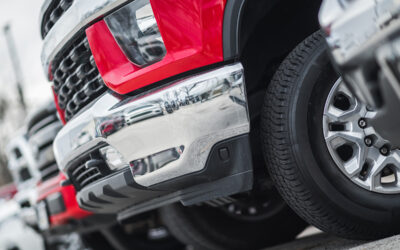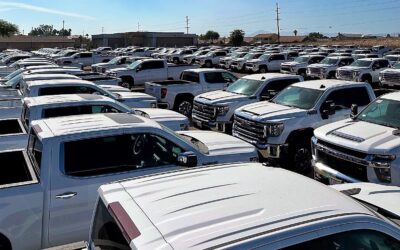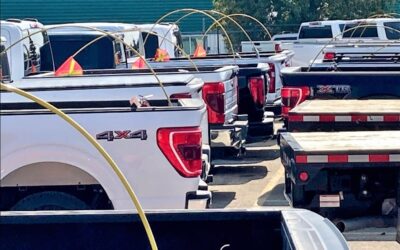Commercial Fleet Accidents on the Rise
When it comes to the job of fleet managers, one of the most challenging aspects of the work they do is the matter of safety. The safety of the company drivers and that of the company vehicles is a constant source of concern for fleet managers mainly because of a lack of compliance to safety regulations on the part of the employees. Everything from the behavior of the drivers to the maintenance of the vehicles are primary factors.
The annual number of accidents that involve vehicles from commercial fleets has risen to around 20 percent. If you take a look at some of the industries specifically, the numbers are even higher. What is the cause for the number of accidents increasing every year where commercial fleet drivers are involved?
One of the reasons behind the rising number of commercial fleet accidents is the number of miles they drive. An average American citizen that drives a non-fleet vehicle will drive anywhere from 12,000 to 15,000 miles each year. A commercial fleet driver covers roughly 25,000 miles in the same amount of time. Considering the fact that the chance of a non-commercial fleet driver getting into an accident over the distance they drive is one in fifteen, it only makes sense that the commercial fleet drivers are more likely to be involved in accidents.
For businesses across all industries, accidents involving the company vehicles and the injuries caused are the number one source of expense. It is not surprising when you think about it. When an accident involving a fleet vehicle occurs, the cost is not only that of the injuries to the employee but also of the vehicle and contents within or being pulled. Other than that, the soft cost of the down time for the duration their vehicle is out of commission is also costing companies. There is a serious need to address the issues surrounding commercial fleet vehicles with the driver compliance being a top priority.
Need to Identify Drivers
One of the foremost things that companies need to do in order to tackle the problem of commercial fleet accidents is to make themselves aware of the extent of the risk. It is crucial that companies make every possible effort to recognize all the employees working for them that are driving vehicles, even those that have not been assigned fleet vehicles. It’s surprising how little businesses know about the non-company vehicle drivers they have employed that use their own vehicles.
Of course it isn’t just about recognizing the extent of the risk. There is also a need to implement measures of safety in order to reduce accidents. There should be an emphasis on improving aspects of vehicle safety on behalf of the higher-ups at companies. Training sessions, extra expense on driver safety, new tech for vehicles (fleet and non-fleet used by employees) and the adoption of telematics for fleet vehicles is necessary for reducing commercial fleet accidents and any other accidents involving company employees.
Original Equipment Manufacturers and Safety Technology
In response to the rising number of commercial fleet accidents, original equipment manufacturers (OEMs) are now focusing more on safety technology which would otherwise only be available for vehicles that are upscaled versions of the basic models ordered by companies for their fleets.
Having safety technology installed in commercial fleet vehicles will go a long way to ensure better safety conditions for the drivers, and the vehicles themselves, while also reducing the overall costs of owning these vehicles for a company. Adopting both passive and active safety technologies for fleet vehicles is going to make a significant impact on the aspect of safety for company drivers and their vehicles.
Proximity sensors, camera systems, automated braking, and other such measures are now being considered basic necessities to ensure safety, but there is an additional option. Fleet managers want to tackle the problem of drivers texting. They want to find the OEMs that can help actively eliminate texting while a vehicle is in motion. It is a leading distraction that can significantly increase the risk of commercial fleet accidents.
The challenge with this is that companies tend to spend the bare minimum vehicles that will conform to standard safety regulations. Spending on more advanced safety technologies is a cost that few are willing to take. It is a matter of debate but the argument in favor is that the ROI will be guaranteed. Introducing advanced safety features to fleet vehicles will result in a lower number of commercial fleet accidents and make roads safer.
Driver Behavior Needs to Change
There is only so much that safety technology can accomplish. The real need is to change driver behavior and encourage them to comply proactively with safety regulations. By changing driver behavior, fleet managers will be able to make an impact on their focus of safety while they are on the road. Driver behavior has a huge role to play in commercial fleet accidents. Risky driver behavior is one of the leading sources of accidents.
The cost of repairing and/or replacing vehicles that have been in accidents are so high that companies tend to ignore the soft costs of additional maintenance due to increased wear and tear on vehicles. If a driver is operating the vehicle without accountability, not only is the driver increasing the risk of getting into an accident, the driver is also increasing the costs for repairs of the vehicle.
Companies need to tackle this challenge head on and make sure that safer driver behavior is encouraged. There needs to be a proactive and well thought out safety program that conveys the necessity of better behavior. Better training exercises for safety and better monitoring systems is going to help ensure better driving habits and decrease the risk of commercial fleet accidents. If driver incentive programs are implemented for better driver behavior on a wider scale across industries, it can work as an effective risk management program.
Final Thoughts
Fleet managers and other senior officials in companies have an important job when it comes to reducing commercial fleet accidents. The issue, however, cannot be resolved unless the drivers in commercial fleets will also become proactive about safety regulations. It is a long process that will have speed bumps along the way, but the statistics have shown there needs to be a stronger emphasis on implementing safety precautions and driver behavior.
Source
https://www.automotive-fleet.com/303123/fleet-safety-metrics-reverse-negatively-accidents-increase






